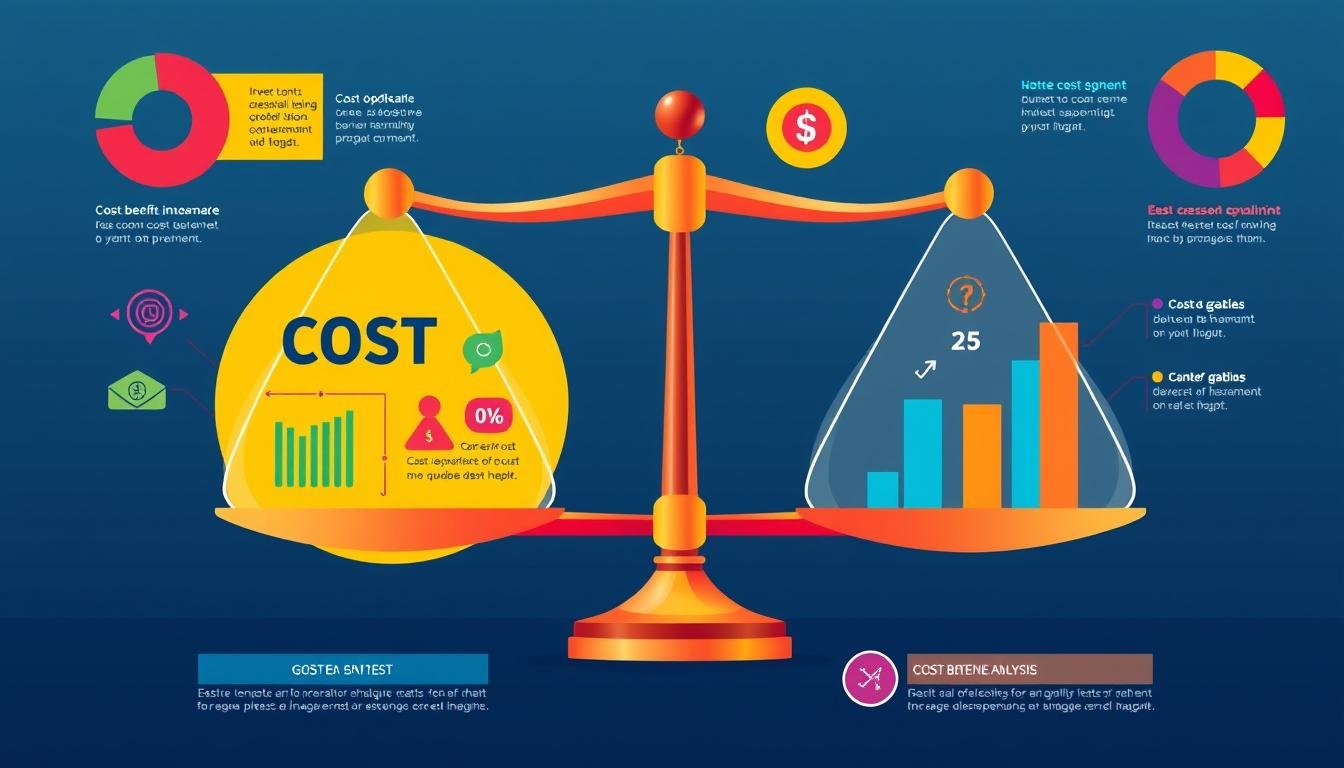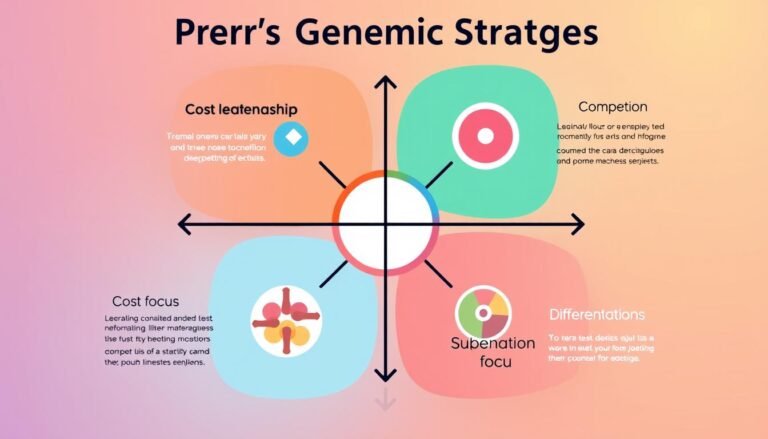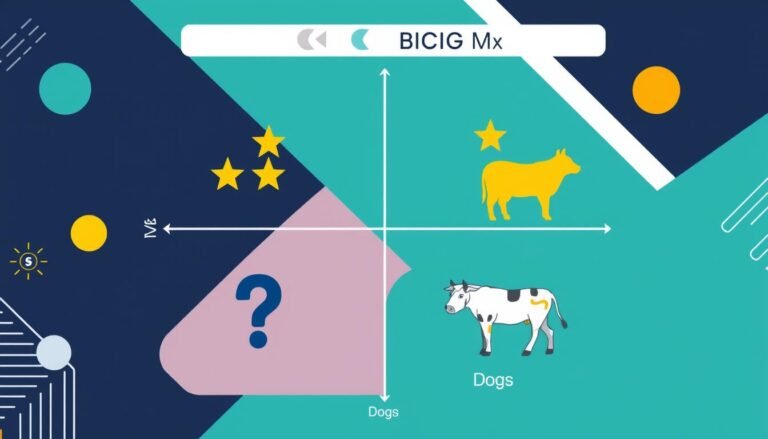Cost-Benefit Analysis Guide for Informed Decisions
Have you ever wondered if the costs of a big project or investment are worth it? This question is at the core of Cost-Benefit Analysis (CBA). It’s a key tool that helps businesses and organizations make smart choices by looking closely at the money side of things. This guide will show you how CBA can help you make better decisions and improve your business.
It’s important to understand the basics of CBA and its history before you start using it. Whether you’re thinking about investing, checking if a project is possible, or planning your strategy, learning about cost-benefit analysis can help you make the best choices.
Key Takeaways
- Cost-Benefit Analysis compares projected costs and benefits, crucial for informed decision-making.
- Consultants assign dollar values to intangible factors, broadening the analysis scope.
- Intangible benefits like employee morale are vital considerations in CBA.
- Forecasting plays a key role in CBA, helping anticipate future costs and benefits.
- Understanding opportunity costs is crucial for evaluating the feasibility of projects.
- Net Present Value (NPV) calculations are essential for determining project viability.
- Accurate data collection is fundamental for effective cost-benefit analysis.
Understanding Cost-Benefit Analysis
Cost-Benefit Analysis (CBA) is a key tool for evaluating projects. It helps by comparing costs and benefits in a systematic way. This method is vital for making informed decisions by looking at both financial and non-financial aspects.
Definition of Cost-Benefit Analysis
A Cost-Benefit Analysis compares costs and benefits of a project. It aims to see if a project is financially viable. To pass, the benefits must be more than the costs. The method uses a formula to find the project’s economic value.
Importance of CBA in Decision Making
Cost-Benefit Analysis is crucial for making decisions in various industries. It helps in evaluating risks and how to use resources wisely. It looks at both the financial and the non-financial sides of a choice.
Companies need to see that benefits are more than costs to approve a project. It also considers the value of other options with similar risks.
| Aspect | Definition/Metric |
|---|---|
| Minimum CBA Ratio | Greater than 1.0 indicates project viability |
| Cost Types | Direct, Indirect, Intangible, Risk Costs |
| Evaluation Metric Examples | Net Present Value (NPV), Return on Investment (ROI), Payback Period |
| Decision Guidelines | Benefits > Costs → Approve; Costs > Benefits → Reject |
Steps to Conduct a Cost-Benefit Analysis
Doing a cost-benefit analysis is a step-by-step process. It helps make better decisions. Here are the key steps to follow.
Establishing the Framework
First, set up a framework for decision making. This framework outlines goals and picks the right methods for evaluation. It helps look at both costs and benefits, giving a full view of the project’s chances of success.
Identifying Costs and Benefits
Then, list all costs and benefits of the project. Costs can be broken down into:
- Direct Costs: These are labor, materials, and inventory costs.
- Indirect Costs: This includes utilities, rent, and other overheads.
- Intangible Costs: Consider things like lower productivity or unhappy customers.
- Opportunity Costs: Think about the benefits lost by choosing one option over another.
For benefits, group them into direct, indirect, intangible, and competitive advantages.
Assigning Monetary Values
Give a dollar value to all costs and benefits. This makes it easier to compare them. It’s crucial for a thorough economic analysis. It helps stakeholders make choices based on data.
Tallying Total Costs and Benefits
Finally, add up the total costs and benefits. This shows important metrics like the Benefit-Cost Ratio (BCR), Payback Period, Net Present Value (NPV), and Internal Rate of Return (IRR). These metrics show if the project is worth it and support strategic decisions.
| Metric | Description |
|---|---|
| Benefit-Cost Ratio (BCR) | Compares total benefits to total costs to evaluate efficiency. |
| Payback Period | Time taken to recoup initial investment through project benefits. |
| Net Present Value (NPV) | Estimates the present worth of future cash flows. |
| Internal Rate of Return (IRR) | Measures anticipated return rate over the project’s lifespan. |
Advantages and Limitations of Cost-Benefit Analysis (CBA)
Cost-Benefit Analysis (CBA) is a powerful tool for making decisions, especially in finance and accounting. It looks at both the costs and benefits of a project. This helps organizations make clear and precise economic evaluations.
Benefits of Implementing CBA
One big plus of cost-effectiveness analysis is its ability to give a clear framework for making decisions. It helps people and companies use their resources well by showing the possible returns on investment. The main benefits of using CBA include:
- Comprehensive Consideration: It makes analysts think about all costs and benefits, even the indirect and intangible ones.
- Prioritization: CBA helps rank projects that can’t be done at the same time, helping pick the best ones.
- Data-Driven Insights: It focuses on facts, not opinions, making decisions more informed and improving project feasibility.
- Dynamic Nature: CBA can change as economic conditions do, letting you recheck projects and their expected results.
Challenges and Drawbacks
Even with its strengths, CBA has its limits. Figuring out all the costs and benefits can be hard, making accurate assessments tricky. Here are some common issues:
- Incomplete Data: Relying on estimates can lead to wrong results, especially if indirect costs or intangible benefits are not measured right.
- Long-Term Project Assessment: Looking at potential benefits over a long time is hard and adds uncertainty to the analysis.
- Quantification of Intangibles: Things like employee morale and customer satisfaction, important for decisions, are hard to put a value on.
- Resource Intensive: Doing a thorough CBA takes a lot of time and resources to get and analyze the data.
Here’s a table that sums up the main points about CBA:
| Aspect | Benefits | Limitations |
|---|---|---|
| Approach | Uses numbers to make complex decisions simpler | It’s hard to account for all indirect costs |
| Focus | Looks at both direct and indirect benefits | May overlook important human factors |
| Data Reliability | Gives clear insights for action based on detailed economic analysis | Relies on forecasts, which can be wrong |
| Flexibility | Changes with the economy | Cost estimates can change, affecting net benefits |
Best Practices for an Effective Cost-Benefit Analysis
A successful cost-benefit analysis relies on best practices for accuracy and relevance. These practices make financial modeling and cost analysis more effective. They help in getting the best results.
Gathering Accurate Data
Getting precise data is key to a good cost-benefit analysis. Using trusted sources makes the analysis stronger and builds trust. This is vital for making smart investment decisions that help society.
Evaluating Risks and Uncertainties
Using tools like sensitivity analysis helps see how changes affect outcomes. This is crucial for better cost analysis. It prepares decision makers for the unexpected and enriches the analysis for smarter decisions.
Ensuring Clarity in Objective
Clear project goals make analysis easier and focused. They help avoid too much information. This clarity leads to better financial modeling and smarter decisions.
Conclusion
Mastering Cost-Benefit Analysis (CBA) is key for organizations wanting to improve their decision-making. It offers a structured way to look at the financial and non-financial effects of projects or policies. This method helps check if investments are good and matches them with big goals.
CBA is known for its value in evaluating costs and benefits. But, it’s important to know its limits. Putting a dollar value on some benefits can be hard, and wrong cost estimates can lead to bad results. Still, using best practices can make the results more reliable and increase the chance of good outcomes.
Using Cost-Benefit Analysis helps both public and private groups make smart choices. By looking at the trade-offs between costs and benefits, they can use resources well. They can make policies and pick projects that bring big benefits to society and the economy.
Source Links
- Cost-Benefit Analysis: How It’s Used, Pros and Cons
- Cost Benefit Analysis: What Is It and How to Do It
- Cost-Benefit Analysis | Economic Growth and Trade | U.S. Agency for International Development
- Cost-Benefit Analysis (CBA)
- Cost-Benefit Analysis: 5 Steps to Better Choices [2024] • Asana
- Cost-Benefit Analysis versus Cost-Effectiveness Analysis from a Societal Perspective in Healthcare
- Cost-Benefit Analysis: What It Is & How to Do It
- How To Conduct A Cost-Benefit Analysis
- Cost-Benefit Analysis
- What is Cost-Benefit Analysis (CBA)?
- Microsoft Word – CBArevise1.doc
- AN INTRODUCTION TO COST BENEFIT ANALYSIS







